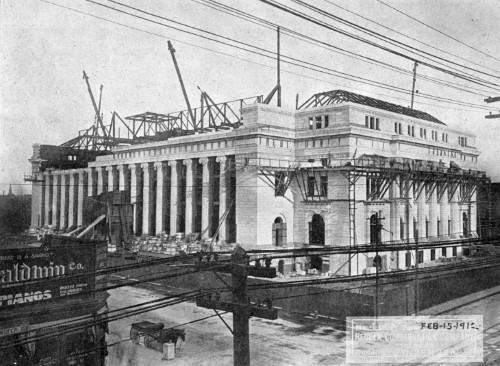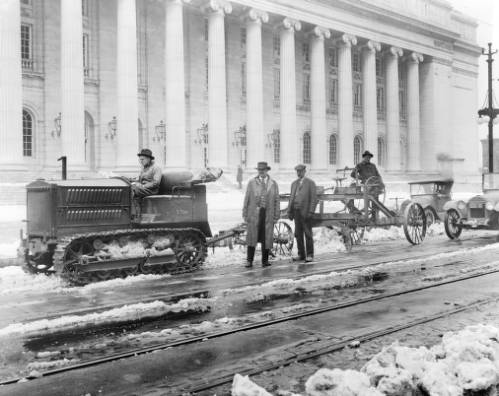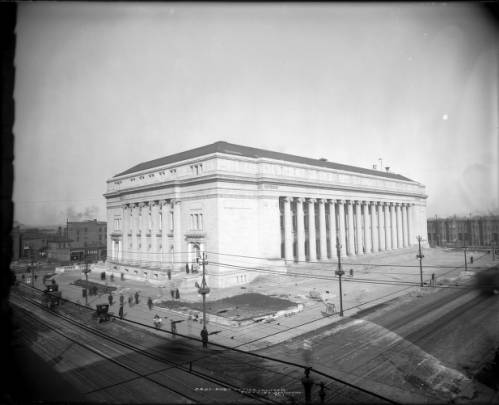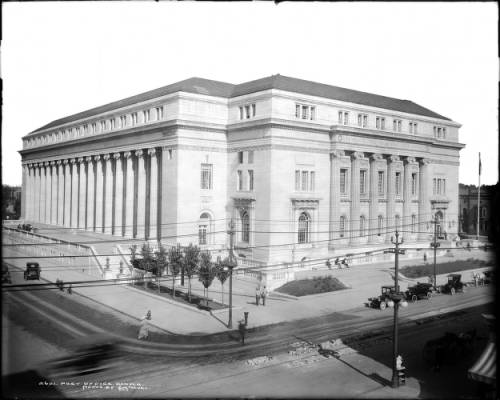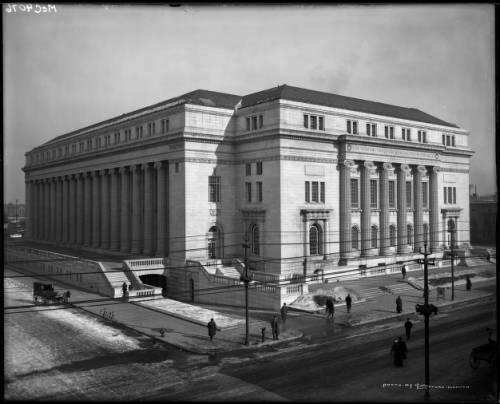
A snapshot of history
The Byron White Courthouse in Denver, Colorado, is a historic building that has played an important role in the city’s history. Built in 1916, the building served as the main Post Office and Courthouse for Denver for many years, and was an important hub of communication and commerce in the city. The Post Office occupied most of the first floor and the U.S. District Court and the U.S. Court of Appeals occupied the second floor.
James Knox Taylor, the Supervising Architect of the Treasury Department, who was known for his work on other post office buildings across the United States was in charge of building the new post office. Taylor’s vision for the Denver Post Office was inspired by the grand Neo-Classical, which was popular at the time and characterized by grand, ornate buildings with classical features. Taylor selected New York architects Tracy, Swartwout, and Litchfield to design Denver’s new Post Office and Courthouse. Due to insufficient funds progress was slow, construction began in 1910 and the building opened in January of 1916.
It was built on a prime location in the heart of downtown Denver, at the corner of Stout Street and 20th Street. The building’s central location made it a focal point for the city’s mail and package delivery, and it quickly became a bustling hub of activity. Over the years, the Post Office underwent several renovations and upgrades to keep up with the changing needs of the city. In the 1960s, however, the building was deemed too small to meet the demands of the growing city, and a new post office was built to replace it.
The fate of the Post Office was uncertain for a time, as it sat empty and unused for several years. But in the 1970s, the building was given a new lease on life when it was acquired by the federal government and converted into the United States Court of Appeals for the Tenth Circuit. In 1973 it was listed in the National Register of Historic Places. In 1994 it was renamed Byron White U.S. Courthouse, in honor of U.S. Supreme Court Justice Byron R. White (1917-2002) a native of Fort Collins, Colorado.
Today, the Courthouse stands as a testament to Denver’s rich history and its ongoing commitment to justice and the rule of law. Visitors can still see many of the building’s original Neo-Classical features, including its grand entrance, ornate stonework, and soaring ceilings. It remains a beloved landmark of Denver and a symbol of the city’s enduring spirit.
In addition to its role as a functioning courthouse, it also serves as a popular tourist attraction. Tours are available for groups (class, school, professional group, club, etc) when schedules permit and there are exhibits that showcase the building’s history and significance. To schedule a tour for your group, contact the Office of the Circuit Executive to arrange the tour.
Thanks for wandering with us,
The Wandering Couchs

